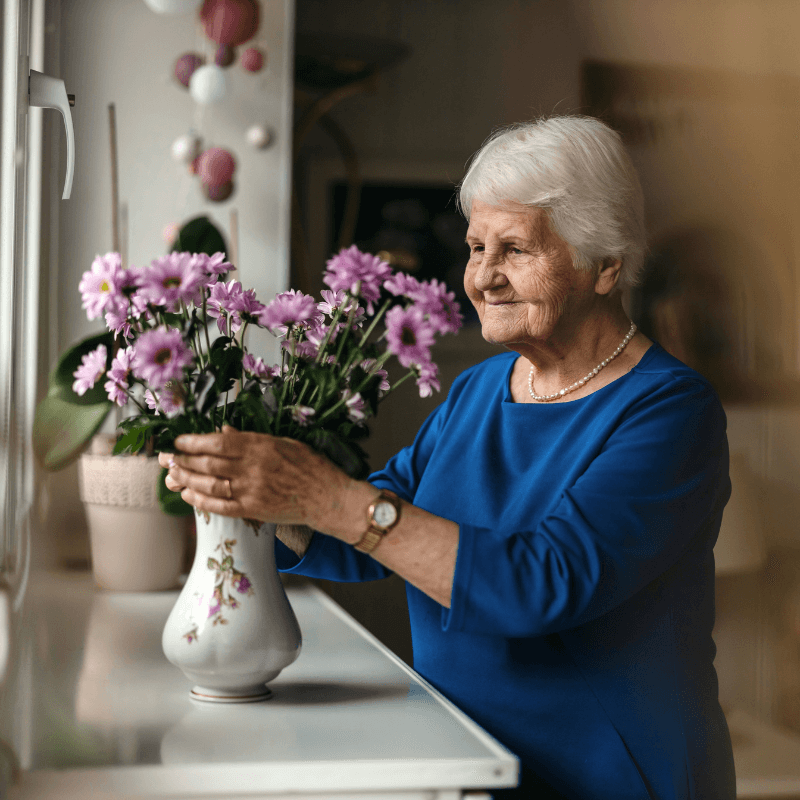Interior Design Tips for People with Dementia
Help your loved one with dementia feel secure and happy in their own home with these dementia-friendly interior design tips!
Simple and Safe
A simple and intuitive layout is key to creating a dementia-friendly home. Start with navigation—remove excess furniture and ensure there’s a clear path through each room as a priority. Handle any tripping hazards like rugs and install non-slip flooring like carpet or carpet tiles. Then, arrange furniture and decor in a manner that makes sense to the person with dementia. For example, a chair near a window with a view can offer your loved one a nice place to rest.
Also, pay close attention to the lighting in your home. Good lighting is crucial, but intense shadows and glare can be unsettling for your loved one. Once you’ve found a balance that works for you, consider installing automatic lights that turn on when your loved one enters the room (for optimum safety!).
Contrasting Colours
Dementia can affect eyesight and the ability to distinguish between subtle colours. So, it’s easy to imagine that a home full of similar shades of white, brown, and grey could create a sea of confusion for your loved one. Instead, try using contrasting colours to help differentiate high-use areas and objects. For instance, a toilet seat that contrasts with the colour of the floor can help someone with dementia identify it more easily. Similarly, plates and cutlery that stand out against the dining table can make eating less stressful.
Remember to be mindful of the colours you choose. Bright, solid colours are helpful for distinguishing objects, but overly vibrant patterns can be confusing or distressing for your loved one. Opt for calming colours (like blue and green) for walls and larger furniture pieces, and use brighter colours for accents and items you want to highlight.
Foster Familiarity
Adding familiar items and themes to your home can provide great comfort and security for your loved one. Keep cherished possessions like family photos, favourite books, or personal keepsakes in easy view. These items can serve as conversation starters and help in recalling happy memories. Decorating with familiar styles, such as furniture from a previous home, can also go a long way to helping your loved one feel at home. Also, for functionality’s sake, always keep high-use items in the same place (i.e. the TV remote on the same side table and reading glasses on the coffee table).
Note: Lots of quick and drastic changes can cause distress and confusion for your loved one. So, aim to make changes gradually wherever possible.
Could you use some help making your loved one’s living environment dementia-friendly? Here at Simply Helping, we offer a great range of home care services, including domestic assistance, transport, social support, and more! Click here to learn more and contact us today.




